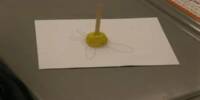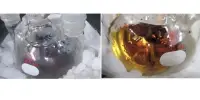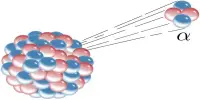The properties of 2D layered materials can drastically alter when they are thinned out (i.e., at the atomic scale), sometimes leading to the emergence of completely new features and the loss of others. While keeping some of the material’s original qualities is frequently just as crucial, new or emergent properties can often be very beneficial for the creation of new technologies.
Researchers at Tsinghua University, the Chinese Academy of Sciences and the Frontier Science Center for Quantum Information have recently been able to realize tailored Ising superconductivity in a sample of intercalated bulk niobium diselenide (NbSe2), a characteristic of bulk NbSe2 that is typically compromised in atomically thin layers. Their techniques, which were described in a paper published in Nature Physics, may make it possible to create 2D thin-layered superconducting materials.
“Atomically thin 2D materials exhibit interesting properties that are often distinct from their bulk materials, which consist of hundreds and thousands of layers,” Shuyun Zhou, one of the researchers who carried out the study, told Phys.org. “However, atomically thin films/flakes are difficult to fabricate, and the emerging new properties are sometimes achieved by sacrificing some other important properties.”
Since a few years ago, Zhou and his colleagues have been looking for experimental techniques to create unique properties that are comparable to atomically thin samples without sacrificing any essential material qualities. In their new study, they examined electrochemical intercalation primarily because it is a useful technique for adjusting the electrical characteristics of layered solid materials.
Therefore, our work provides an important pathway for creating hybrid materials with tunable functionalities possibly exceeding the bulk crystals and monolayer samples. Besides superconductors, we would like to apply this strategy to many other layered materials to obtain more intriguing properties. We expect that thanks to intercalation, intriguing properties exceeding both bulk crystals and monolayer samples will soon be enabled in a growing number of layered materials.
Shuyun Zhou
“The bulk material is immersed in the ionic liquid, which consists of cations and anions,” Zhou explained. “Such ionic liquids have been widely used for injecting electrons into few-layer samples, while the ions remain in the liquid. We have found out that by applying a larger negative voltage, the large-size organic cations can be driven into the van der Waals gap (the empty space between the active layers, NbSe2 layers in this case), forming hybrid materials.”
Zhou and his coworkers’ tests revealed that intercalation is a successful tactic for managing the dimensionality and carrier concentration of their NbSe2 layered sample. By employing this method, they were able to produce a tailored NbSe2 sample with an Ising superconductivity that was higher than that of monolayer and bulk NbSe2 samples but not of intercalated bulk NbSe2.
Basically, intercalation strategies involve submerging a bulk material in an ionic liquid and then applying electrical voltage afterward. The interactions between the active layers of a bulk layered material are decreased as a result of this process, which causes an increase in their spacing.
“Although the intercalated NbSe2 material still consists of many layers, its properties behave quite similarly to those of monolayer NbSe2 samples,” Zhou said. “Specifically, the intercalated material’s superconductivity can survive under a large in-plane magnetic field, but the superconducting transition temperature is higher than monolayer NbSe2. In addition, the cations can transfer charges to the active layers and act as protecting layers, making the hybrid material stable in the air.”
While Zhou and his colleagues specifically used their intercalation-based strategy to broaden the properties of a layered 2D NbSe2 sample, the exact same strategy could also be applied to a wide range of layered materials to achieve properties comparable to those of monolayer versions of these materials, or even better.
So far, this method has enabled tailored Ising superconductivity in NbSe2, enhanced superconductivity in Weyl semimetal MoTe2 and semiconducting-to-superconducting transition in SnSe2.
“Our intercalation method is quite generic and can be readily extended to a large variety of layered materials and a large selection of ionic liquids with different cations,” Zhou added.
“Therefore, our work provides an important pathway for creating hybrid materials with tunable functionalities possibly exceeding the bulk crystals and monolayer samples. Besides superconductors, we would like to apply this strategy to many other layered materials to obtain more intriguing properties. We expect that thanks to intercalation, intriguing properties exceeding both bulk crystals and monolayer samples will soon be enabled in a growing number of layered materials.”
















